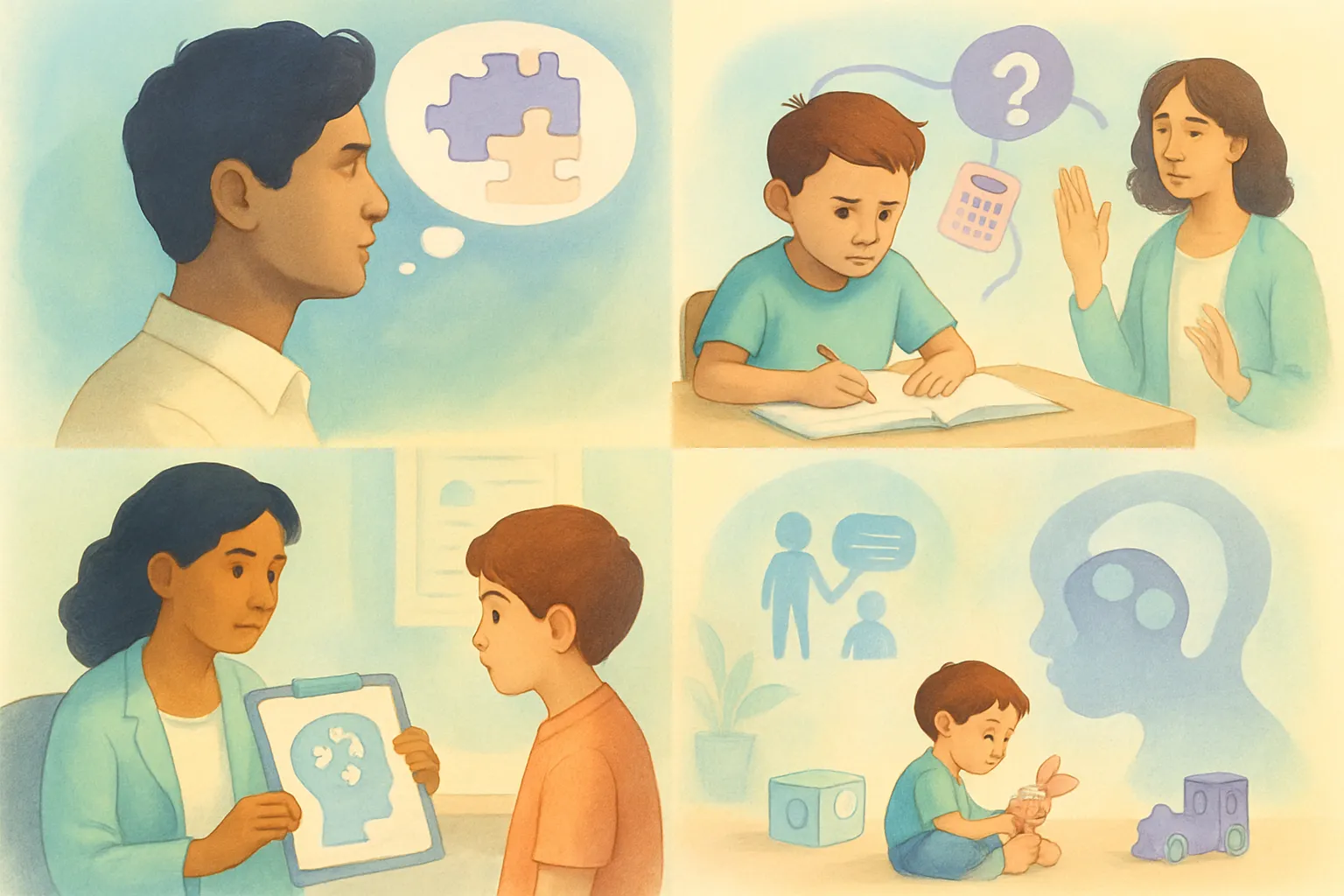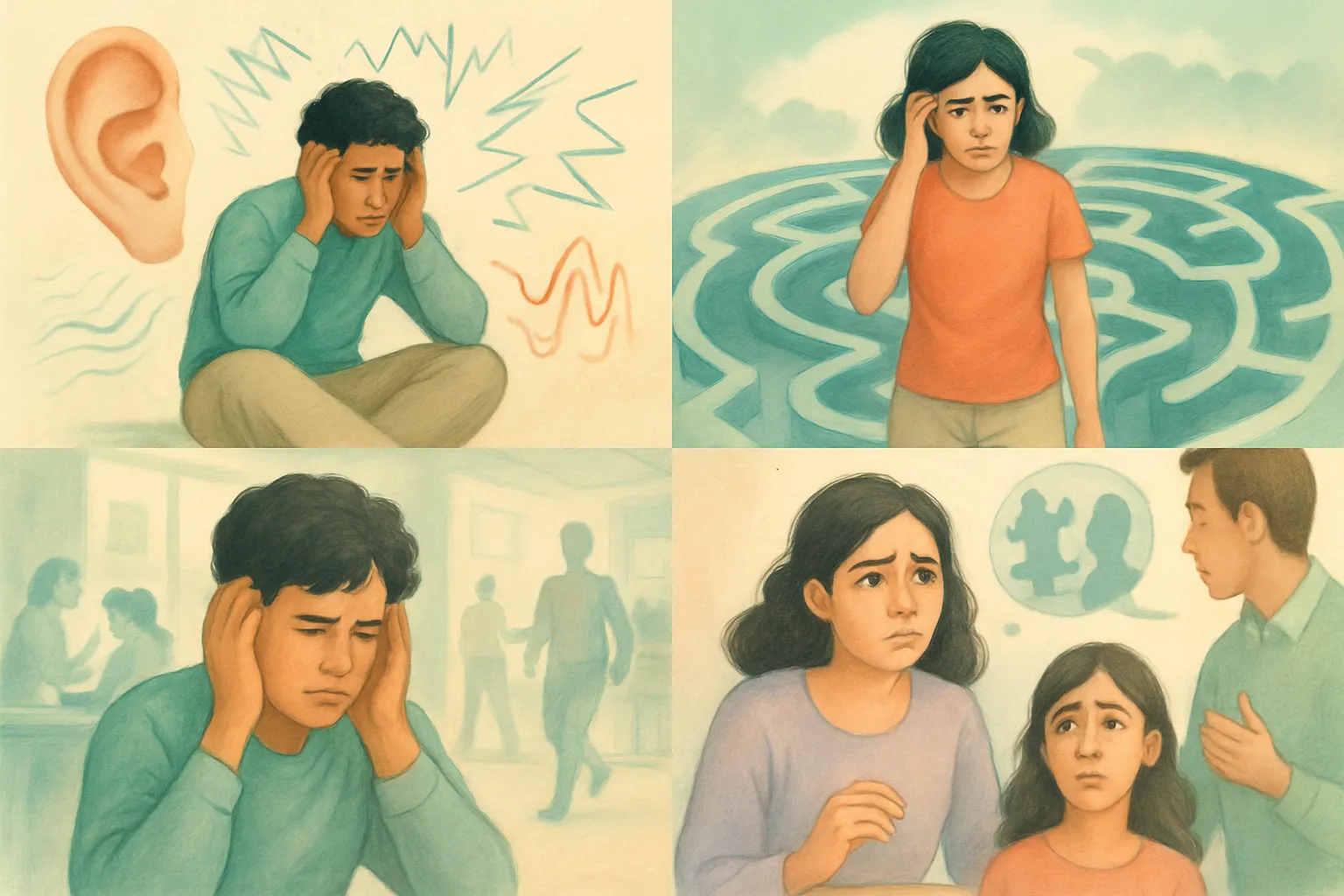Curriculum
- 15 Sections
- 15 Lessons
- 2 Weeks
- Understanding Your Role2
- Duty of Care2
- Equality and diversity2
- Person-centred care and empowerment2
- Communication2
- Privacy and dignity2
- Fluids and nutrition2
- Awareness of mental health, dementia and learning disabilities2
- Safeguarding adults2
- Safeguarding children2
- Basic life support2
- Health and safety2
- Handling information2
- Infection prevention and control2
- Understanding learning disabilities and autism2
Curriculum
Understanding learning disabilities and autism
Learning Objective:
Recognize and address sensory and communication needs in learning disabilities and autism, and understand the distinctions between these conditions to support people effectively.
Definitions and prevalence

Learning disabilities and autism spectrum disorder are both conditions that can impact individuals’ ability to process information, but they are distinct in terms of diagnostic and developmental features. Learning disabilities primarily affect cognitive processes involved in language, math, and reason, often observable through difficulties in reading, writing, or arithmetic. Autism, on the other hand, primarily impacts social interaction and communication skills, often characterized by restricted interests and repetitive behaviors.
The prevalence rates for learning disabilities and autism vary, with learning disabilities affecting approximately 15% of the population, while autism affects about 1% globally. These conditions are common and manifest uniquely in each individual, reinforcing the importance of personalized understanding and support strategies.
Further Details on Prevalence and Nuances
Prevalence data highlight that learning disabilities and autism have different demographic impacts. For instance, boys are diagnosed with autism more frequently than girls. Recent studies have shown that autism identification rates are increasing, which some attribute to heightened awareness and more inclusive diagnostic criteria. Regarding learning disabilities, the evolving definitions and criteria sometimes lead to varied reporting statistics across regions.
Understanding overlapping symptoms is crucial, as people with autism might also experience challenges typical of those with learning disabilities, such as difficulty in language comprehension. This overlap often leads to misinterpretations, emphasizing the need for accurate diagnoses.
- Learning Disabilities
- Autism Spectrum Disorder
- Sensory Needs
Cognitive impairments affecting language, math, or reading skills.
Condition affecting social skills, communication, and behavior.
Requirements related to sensitivity or overload in sensory processing.
Challenges faced by individuals

Individuals with learning disabilities and autism face unique challenges, particularly concerning sensory and communication needs. Sensory issues may include heightened sensitivity to noise or difficulty processing multiple stimuli at once. These can cause environments like busy workplaces to become overwhelming. Communication difficulties might involve challenges in understanding verbal instructions or interpreting social cues, which can impact social interactions and task performance.
Recognizing these challenges is vital for anyone in a supportive role, especially in job settings. Simple adjustments, such as providing clear written instructions or creating flexible routines, can significantly enhance workplace inclusion and function for these individuals.
- Sensory Overload
- Communication Barriers
- Need for Clear Instructions
- Routine Disruptions
Being overwhelmed by excessive sensory input, such as loud sounds or bright lights.
Difficulty in understanding or expressing verbal and non-verbal messages.
Requiring specific and clear guidelines to effectively complete tasks.
Struggles with coping when daily routines are interrupted.
Myths and misconceptions

There are many myths and misconceptions surrounding learning disabilities and autism that can hinder effective support. A common myth is that individuals with autism all have exceptional abilities in specific areas, which is not universally true. Another is that learning disabilities equate to low intelligence, whereas these individuals often possess average to above-average intelligence but exhibit challenges in particular areas.
These myths can perpetuate stereotypes, leading to mismatched expectations and inadequate support strategies. Supporting individuals effectively requires a shift to evidence-based understanding, recognizing that each person’s needs and capabilities vary widely. Thoughtful adjustments based on factual information foster better inclusion and success in any supportive environment.
- Myth: All individuals with autism have savant skills.
- Myth: Learning disabilities reflect low intelligence.
Fact: Exceptional abilities are rare and not present in all individuals with autism.
Fact: Intelligence can be average or above average; challenges are specific, not general.